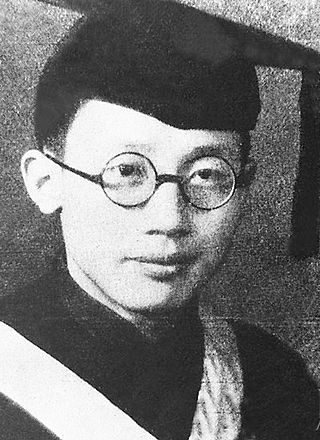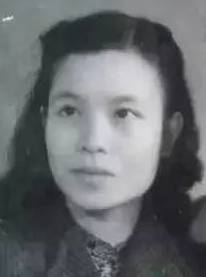
Yang Chen-Ning or Chen-Ning Yang, also known as C. N. Yang or by the English name Frank Yang, is a Chinese theoretical physicist who made significant contributions to statistical mechanics, integrable systems, gauge theory, and both particle physics and condensed matter physics. He and Tsung-Dao Lee received the 1957 Nobel Prize in Physics for their work on parity non-conservation of weak interaction. The two proposed that one of the basic quantum-mechanics laws, the conservation of parity, is violated in the so-called weak nuclear reactions, those nuclear processes that result in the emission of beta or alpha particles. Yang is also well known for his collaboration with Robert Mills in developing non-abelian gauge theory, widely known as the Yang–Mills theory.

Tongji University is a national public research university located in Shanghai. Established in 1907 by the German government together with German physicians in Shanghai, Tongji is one of the longest-standing, most selective, and most prestigious universities in China under the Project 985 and Double First Class University Plan. It is a Chinese state Class A Double First Class University.

Turbomachinery, in mechanical engineering, describes machines that transfer energy between a rotor and a fluid, including both turbines and compressors. While a turbine transfers energy from a fluid to a rotor, a compressor transfers energy from a rotor to a fluid.

Qian Weichang or Chien Wei-zang was a Chinese physicist and applied mathematician, as well as academician of the Chinese Academy of Sciences. He served as President of Shanghai University.
Gaolian Liu is a scientist of Engineering Thermal Physics and Hydrodynamics, a professor of Shanghai University, and an academician of the Chinese Academy of Sciences.
Peng Huanwu was a Chinese physicist. He was a member of Chinese Academy of Sciences (CAS), and a leader of Chinese nuclear weaponry projects.
Wu Zhengyi was a Chinese botanist and an academician of the Chinese Academy of Sciences (CAS). Wu specialized in Botanical Geography and Medicinal Botany. He is also known by the alternative spellings of 'Wu Cheng-yih', 'Wu Zheng Yi' and 'Cheng Yih Wu'.
The Wu Chinese people, also known as Wuyue people, Jiang-Zhe people (江浙民系) or San Kiang (三江), are a major subgroup of the Han Chinese. They are a Wu Chinese-speaking people who hail from Southern Jiangsu Province, the entirety of the city of Shanghai and all of Zhejiang Province, as well as smaller populations in Xuancheng prefecture-level city in Southern Anhui Province, Shangrao, Guangfeng and Yushan counties of Northeastern Jiangxi Province and some parts of Pucheng County in Northern Fujian Province.
Cheng Xu is a Chinese American aerodynamic design engineer and engineering manager. He is a Fellow of the American Society of Mechanical Engineers and a member of the Technical Committee on Energy and Power Systems, IASTED. He also served as a guest editor of International Journal of Rotating Machinery.
Wu Jianping, also known as Jian-Ping Wu, is a Chinese computer scientist. He is Professor and Chair of Computer Science and Technology at Tsinghua University. He is also Chairman of the China Education and Research Network (CERNET) Technical Board and director of the CERNET center, and vice president of the China Internet Association.
Theodore Yaotsu Wu is an American engineer. He is a Professor Emeritus of Engineering Science at the California Institute of Technology. His research contribution includes compressible fluid flow, free-streamline theory of cavities, jets and wakes, water waves and free-surface flows, mechanics of fish swimming and bird/insect flight, wind and ocean-current energy, and internal waves in the ocean.
Wu Mi was one of the founders of Chinese comparative literature, a critic, redologist, educator and poet. In 1942 he became a professor in Ministry of Education. He was also one of the originators to begin Tsinghua University's school of Sinology. While studying at Harvard, he became known as "one of the three Outstanding Persons of Harvard" along with Chen Yinke and Tang Yongtong (汤用彤).

Wu Liangyong is a Chinese architect and urban planner. He was a former professor in urban planning, architecture, and design. In preparation to the 2008 Summer Olympics in Beijing, he was leading the team that studied the buildings of the games. He is considered the most influential architect and urban planner in China.
Qian Lingxi, also known as Tsien Ling-hi, was a Chinese civil engineer and physicist. An authority on engineering structural mechanics and computational mechanics, he served as president of the Dalian University of Technology (DUT) and was a founding member of the Chinese Academy of Sciences (CAS). DUT's Lingxi Library, opened in 2009, is named after him.

Joseph Katz is an Israel-born American fluid dynamicist, known for his work on experimental fluid mechanics, cavitation phenomena and multiphase flow, turbulence, turbomachinery flows and oceanography flows, flow-induced vibrations and noise, and development of optical flow diagnostics techniques, including Particle Image Velocimetry (PIV) and Holographic Particle Image Velocimetry (HPIV). As of 2005, he is the William F. Ward Sr. Distinguished Professor at the Department of Mechanical Engineering of the Whiting School of Engineering at the Johns Hopkins University.

Li Minhua, also known as Minghua Lee Wu, was a Chinese aerospace engineer and physicist who was an expert in solid mechanics. The first woman to earn a PhD in mechanical engineering from the Massachusetts Institute of Technology, she was one of the founding scientists at the Institute of Mechanics of the Chinese Academy of Sciences (CAS), and was elected as an academician in 1980. Her husband Wu Zhonghua was also an accomplished physicist and CAS academician.
Gong Zutong was a Chinese optical physicist. He was a founder of China's optical glass industry and served as Founding Director of the Xi'an Institute of Optics and Precision Mechanics of the Chinese Academy of Sciences (CAS). He was elected an academician of the CAS in 1980.

Xu Shunshou was a Chinese aircraft designer and a founder of the aircraft manufacturing industry in the People's Republic of China. He was the founding director of the PRC's first aircraft design organization, where he oversaw the development of the Shenyang JJ-1, the first jet aircraft designed in China. He trained many of the country's top aircraft designers and also participated in the design of the Nanchang CJ-6 trainer, the Nanchang Q-5 jet attack aircraft, and the Xian H-6 bomber. He was severely persecuted during the Cultural Revolution and died at the age of 50.

Wu Ziliang, also known as Tsu-Liang Wu, was a Chinese materials engineer, physical metallurgist, and physicist. He led the team that developed the essential membrane separation technology which enabled China to separate uranium-235 used for making its first nuclear bomb. He was awarded the Two Bombs, One Satellite Meritorious Medal in 1999, and also made significant contributions to steel metallurgy, semiconductors, and superconductivity research. Wu was a fellow of the American Association for the Advancement of Science and an academician of the Chinese Academy of Sciences.
Wu Minsheng was a Chinese mechanical engineer. He served as Dean of Tsinghua University and President of Fuzhou University (2002–2010).










